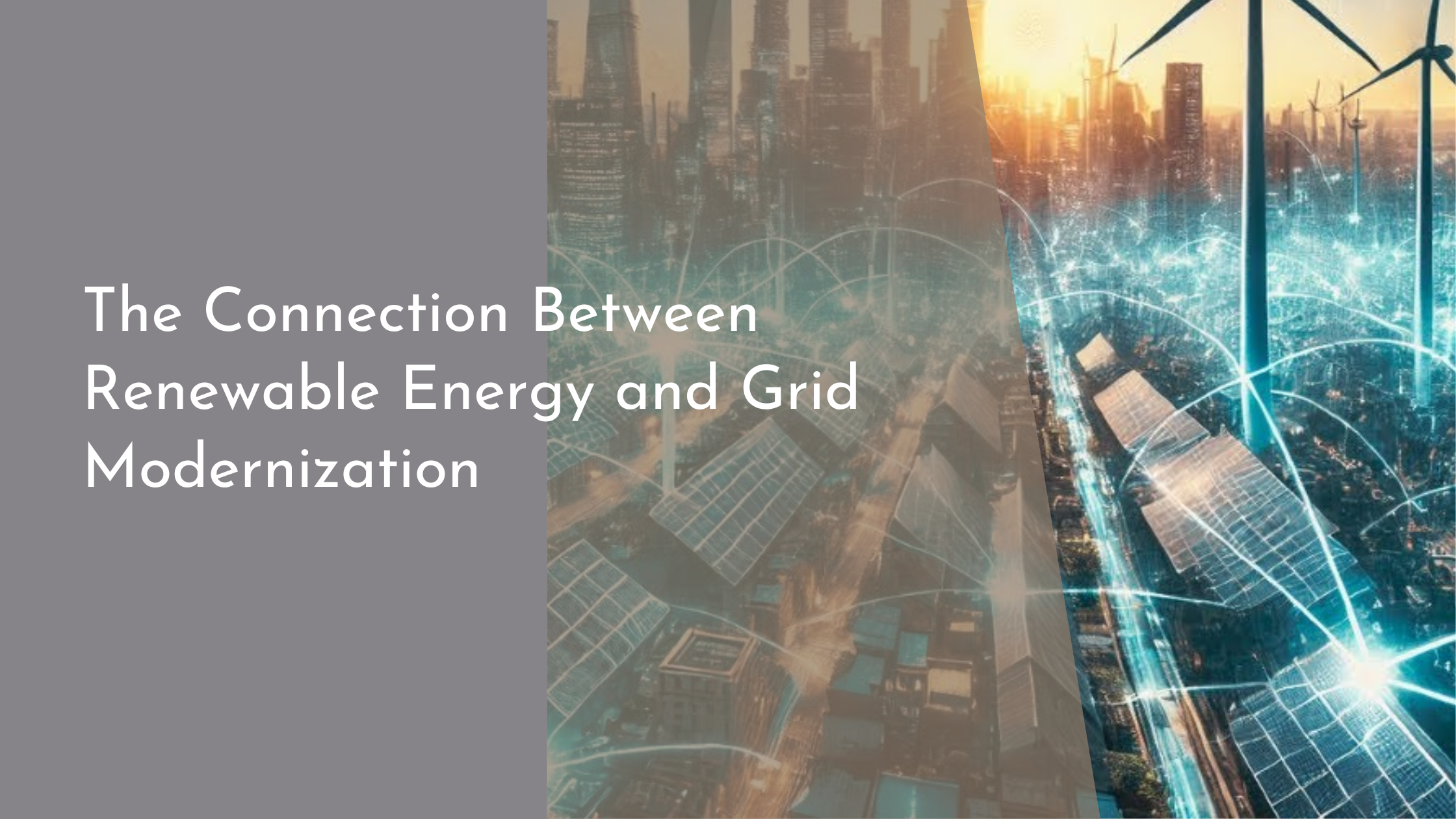The Connection Between Renewable Energy and Grid Modernization
Renewable energy has become a cornerstone of the global effort to create a more sustainable and environmentally friendly energy landscape. As countries strive to decrease their carbon footprints and move away from fossil fuels, integrating renewable energy sources like wind, solar, and hydroelectric power into the electrical grid is paramount. However, this transition is not without its challenges. It necessitates significant advancements in grid modernization to ensure reliable, efficient, and resilient energy distribution. This article explores the symbiotic relationship between renewable energy and grid modernization, delving into the innovations driving this evolution, as well as the challenges and opportunities that arise.
Understanding Renewable Energy’s Role in the Grid
The transition towards renewable energy sources is fundamentally reshaping the way electric grids operate. Unlike traditional power plants, which offer a steady and predictable energy output, renewables like solar and wind are intermittent by nature. This variability necessitates a grid that can dynamically respond to fluctuations in power generation and demand. As a result, the integration of renewable energy into the grid requires a more sophisticated approach to managing supply and demand, often involving real-time data analytics and advanced forecasting techniques to ensure a stable and reliable energy supply.
Moreover, renewable energy sources are decentralizing the grid. Traditionally, electricity generation was centralized, with power plants distributing electricity across a network of transmission lines. However, renewable sources are often smaller and distributed across various locations, such as rooftop solar panels or community wind farms. This shift calls for a rethinking of grid design and management strategies. Modern grids must accommodate distributed energy resources, which offer the advantage of reducing transmission losses and enhancing energy security but also present new challenges in terms of coordination and control.
Innovations Driving Grid Modernization Forward
Technological advancements are at the heart of grid modernization efforts. Smart grid technology, for instance, is revolutionizing the way electricity is transmitted and consumed. These intelligent systems use sensors, meters, and automation to increase the efficiency and resilience of the grid. By providing real-time data on energy usage and generation, smart grids help operators make informed decisions that optimize the balance between supply and demand, reducing waste and ensuring reliability even as renewable energy sources fluctuate.
Energy storage solutions are another pivotal innovation driving grid modernization. Batteries and other storage technologies play a crucial role in mitigating the variability of renewable energy. They store excess energy produced during peak generation times and release it when production drops, thereby smoothing out the discrepancies between supply and demand. This capability not only enhances grid stability but also supports the widespread adoption of renewables by making them more reliable and consistent as primary energy sources.
Challenges and Opportunities in Integration
Integrating renewable energy into the existing grid infrastructure presents several challenges. One major issue is the need for significant infrastructure upgrades to accommodate the new flow patterns of electricity. This requires substantial investment, which can be a barrier for many regions. Additionally, the intermittent nature of renewables necessitates advanced grid management systems capable of balancing the unpredictability of renewable generation with consumer demand. These complexities demand a workforce skilled in both renewable technologies and electrical engineering, further emphasizing the need for educational and training programs in this evolving field.
Despite these challenges, there are significant opportunities in the integration of renewable energy. The shift towards a modernized grid opens doors for innovation and economic growth, creating new jobs in technology development, infrastructure upgrades, and professional services. Furthermore, the decentralization of energy production can empower communities, allowing them to become more energy independent and resilient. This decentralization also aligns with global sustainability goals, promoting a cleaner and healthier environment by reducing reliance on fossil fuels and decreasing greenhouse gas emissions.
The Bright Future of Energy and Grid Evolution
As the world continues to embrace renewable energy, the evolution of the electrical grid represents a beacon of progress and innovation. Advanced grid technologies, like smart meters and distributed energy management systems, offer a glimpse of a future where energy is not only sustainable but also highly efficient and reliable. These advancements pave the way for new business models and services, such as demand response programs and peer-to-peer energy trading, which can further optimize energy usage and enhance consumer engagement.
The journey towards a modern grid powered by renewable energy is a dynamic and exciting process with great potential. As technical and financial challenges are addressed, the opportunities for a sustainable and resilient energy system become increasingly attainable. This transformation promises not only to reduce environmental impact but also to enhance energy security and create a more equitable and empowered global energy landscape.
The connection between renewable energy and grid modernization is a pivotal component of the global energy transition. While challenges remain, the innovations and opportunities that arise from this evolution are promising. By continuing to invest in and support advancements in grid technology and renewable energy integration, societies worldwide can look forward to a future where energy is cleaner, more accessible, and more efficient than ever before. This harmonious relationship between renewables and a modernized grid is not just a path to sustainability, but a gateway to a brighter, more energy-secure future.

